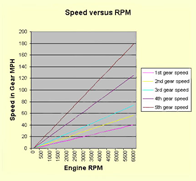
.“If you’re early on in your career and they give you a choice between a great mentor or higher pay, take the mentor every time. It’s not even close. And don’t even think about leaving that mentor until your learning curve peaks.” Stanley Druckenmiller
STEM is the integration of Science, Technology, Engineering and Math. Science is about real tangible things that move, fly, explode, burn, haul loads, float, record images, stop diseases, and explore the universe. It includes all the interesting exciting “creations” of the times in which we live. The universal language of science is mathematics. Mathematics is “the study of patterns.” Anyone can learn to speak this mathematical language now made accessible to us through modern technology: spreadsheets, calculators, and computers. Engineering happens at the intersection of science, technology, and mathematics as STEM professionals engage in data driven design and decision making

This Learning Curves series of blogs examine the steps we can take to foster data-driven design thinking and decision making. In a world in which big data is finding its way into virtually every industry, data skills are growing more important in preparing for most career pathways. From making decisions about levels of inventory to be kept in a small business to designing logistics plans for UPS deliveries, data is at the core of systems thinking. It is imperative that US students gain this skill and practice it until they are proficient. Data-Driven Decision making (DDD) is not a skill that can be mastered in one experience or over a short time. It is a performing art and like other such arts, it must be practiced throughout K-12 education.
How do we move students on this pathway to modeling and making data driven decisions?
STEP ONE! Pose the right kind of problems.
If the problems posed to students are too simple, they never progress to non-linear or more abstract thinking. If the problems posed are too messy and do not lend themselves to experiments with quantifiable outcomes, students never gain proficiency collecting and analyzing data and have no opportunity for complex data driven thinking.
In their formal education, students are taught content skills. They learn to organize a data set into tables and graphs. They learn to “read graphs”. In social studies, they may compare the populations of the largest cities in developed countries. In science, they might determine how tall plants grew with varying brands of fertilizer applied or document outcomes in a high school chemistry or physics investigation. Too many students are not exposed to problems that requires critical thinking beyond their core content skills. These more challenging problems are often reserved for the relatively few students who take statistics classes or other upper level math and physics courses. However, even in these courses, there is little opportunity to practice these skills in project-based environments. Problems can be characterized in a variety of ways. For the purpose of selecting appropriate problems in school curriculums, I chose one that uses three terms: Tame, Complex, and Wicked.
In schools, we should take students beyond Tame problems and introduce them to critical thinking and data analysis that is helpful if not required with more complex problems. Our goal is to give them the skills and experience over time to tackle not only complex problems in school and the workplace using data driven decision making, but also those wicked, messy problems that change the way we live and interact. Very likely, we can take students from being Novice problem solvers to Intermediate problem solvers in K-12. In college or in the workplace these students can become experts and, usually working teams, can address the very complex and wicked issues that face society.
- Tame or Simple Problems
A Tame problem can be solved in a linear fashion using straightforward, reductionist, repeatable, sequential techniques. A Tame problem is well defined, its solution is clear and can be given to a designer to create detailed specifications and to a project manager to implement. Many tame problems have tried and tested solutions, or standard ways of working out a solution, and they do not need a particularly ‘creative’ approach

“Tame” Problems:
How does added weight in your book bag affect how fast you can sprint?
Generally, added weight slows speed. Data from test runs will produce a solution and from that, one can derive a relationship such as “for every added pound in the bookbag, my sprint speed reduced by x feet/second.”
How does your radio controlled car’s transmission gear ratio affect top speed?
If the gear ratio is lower it has less acceleration but a higher top speed.
Solve an algebraic equation with known values.
Discovering the values of x and y may or may not be easy, but there is a single solution that exists whether the problem solver finds it or not.
2. Complex Problems
Complex, messy problems in the real world tend to be non-linear. A complex problem is not easily solvable by sequential or reductionist or sequential methods. There is, however, a problem that can be defined and there may be many solutions. Maximization problems with a “correct answer” to be found are Tame but many are messy and complex.
“Complex” Problem for Engineers:
Build a reusable rocket to deliver astronauts to the International Space Station.
This was a complex and complicated problem, but a solution was found in 2020 and now the solution can be used to recreate the outcomes. There may be other solutions to this problem.

“Complex” Problem for Students:
Maximize the Setup your radio-controlled car to finish first in a 45-minute race on a road course with multiple turns. This is a complex and complicated problem. Professionals wrestle with this issue each week on the professional racing circuit. Auto companies wrestle with the setup for street cars vs sports cars. Like these full-sized cars, tenth scale radio- controlled cars have multiple setup combinations of gears, camber, castor, tires, body styles, and drivers. However, with data collection and analysis, setups can be tested There are multiple possible solutions.

3. Wicked Messy Problems
Every Wicked problem is unique and these overlap with Complex problems. You may not understand the problem until you have developed a solution. Indeed, there is no definitive statement of “The Problem.” The problem is ill-structured, an evolving set of interlocking issues and constraints. There may be no solutions, or there may be a host of potential solutions that are devised, and another host that are never even thought of. Solutions are “one shot operations”.
For example, you cannot build a freeway to see if it works.
Infrastructure problems are “wicked” as there are multiple considerations and often unanticipated consequences for any decision made with respect to changing the natural environment. Social problems and health problems are “wicked” as are problems like climate change and wildfire prevention.
Wicked problems such as climate change are – and should be – introduced to students, but are too large, messy and complex for experimentation by students.
References:
- Illustration 157231884 © Sunwards | Dreamstime.com
- Stanley Druckenmiller – If you’re early on in your career…. https://www.brainyquote.com/quotes/stanley_druckenmiller_897245
- mrose14408 | https://maryroseamameo.wordpress.com/
- Peter G. Rowe, Design Thinking (Cambridge, MA: MIT Press, 1987), 40.
- “Wicked Problems Versus Tame Problems · Guide to Journalism and Design.” Towcenter.Gitbooks.Io, towcenter.gitbooks.io/guide-to-journalism-and- design/content/introduction_what_design_ means/wicked_problems_versus_tame.html. Accessed 30 Sept. 2020.
- Three Types of Problem – drbrd.com. http://www.drbrd.com/problems_and_solutions/three_types_of_problems.html
- No Data, No Technology: Removing Obstacles from MSMEs …. https://idbinvest.org/en/blog/development-impact/no-data-no-technology-removing-obstacles-msmes-path-growth
